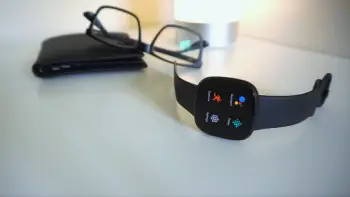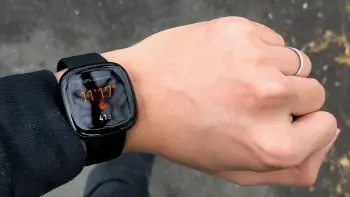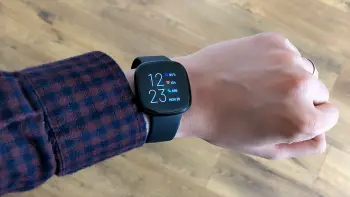With Google’s purchase of Fitbit, it seems like we’re coming closer and closer to finally seeing a purely Google-branded wearable, especially if you factor in the continuous rumors of the upcoming “ Pixel Watch.” In the meantime though, the closest we have right now to an “official” Google wearable is Fitbit’s line-up of smartwatches (aside from WearOS devices, but I digress) and fitness trackers. If you’re looking to get one for yourself, then the Fitbit Versa 3 strikes the perfect balance of functionality and price, especially if you’re upgrading from a more basic fitness tracker. Here are some reasons to check it out!
Sturdy Build & Impressive Design

Let’s take a quick moment to talk about the design on the Versa 3. It retains the basic look of the earlier Fitbit Versa models, but has a more rounded look to it, resulting in a refined appearance. One major change compared to older Versa models is that instead of a physical control button on the side, Fitbit has decided to equip the Versa 3 with a touch-based capacitive button that responds to pressure. It’s a bit similar to the home button on the iPhone SE, and vibrates when it registers a press. It can sometimes take a couple of tries to register a button press though.
The watch has a metal unibody and is of course IP certified to be waterproof and dustproof. You don’t have to worry about water damage if you’re ever caught in the rain, or decide to take it swimming with you. Overall it feels sturdy, and I’ve worn it daily without any problems.
OLED Display
Another standout feature of the Versa 3 is the OLED display. It gets pretty bright even when outdoors, and I’ve never had any difficulty when reading the screen in broad daylight. It’s also very responsive, so swiping across the user interface is an effortless affair, and it’s a lot more responsive compared to the older Fitbit Versa models. There’s auto-brightness as well which is definitely a nice addition.
It also comes with a layer of Gorilla Glass to keep it safe from most damage, although to be honest I, unfortunately, have a couple of micro-scratches on the display. They’re very small though and are barely visible, and it sure beats having a cracked screen.
Built-in GPS

The Fitbit Versa 3 also features built-in GPS, meaning that you no longer need to keep your watch constantly connected to your smartphone. It’s a nice upgrade if you’re coming from a more basic fitness tracker, and you can go for a walk or run without the need to bring along a secondary device. It works nicely, although I’ve noticed that it takes a bit of time to load during startup, which can take anywhere from a few seconds to a minute, usually depending on your location. Once it connects though, you’re pretty much good to go.
Google Assistant
Like we mentioned earlier, Fitbit is now officially owned by Google, and it was only a matter of time before we got certain Google services on Fitbit devices. As a result the Versa 3 supports Google Assistant functionality. I think it’s a great feature because it makes the Assistant service more accessible to Fitbit users, and it’s a seamless way to integrate Google’s data services into your smartwatch.
Thanks to the built-in speaker and microphone on the Fitbit Versa 3, you can also converse with the assistant, essentially giving you the same experience as you’d normally have when using Google assistant on your smartphone. You do need to have your Versa 3 connected to your smartphone when using this, which is something to keep in mind.
Battery Life

The Fitbit Versa 3 also comes with great battery life. I’ve managed to get good battery performance from the watch, and on average each charge lasts me about 5-6 days before I need to charge it again, which is a big difference compared to other smartwatches out there that require you to charge the battery every night. It does come with fast charging so an hour’s worth of charge can give you a full battery, depending of course on how drained your watch was prior to charging.
Now if you use GPS a lot, keep your watch connected to your phone 24/7, or use it with a high brightness setting, then you may end up having to charge more frequently than usual. But moderate users can expect more than half a week’s worth of battery life with this one.
Still Worth It?
If you’re planning to get the Fitbit Versa 3, it does come with some great features like the ones I mentioned above. Of course, you can always opt to spend a bit more to get the Fitbit Sense, but on its own, the Versa 3 manages to perform nicely and has a wealth of health-tracking features built-in. If you want a perfectly capable wearable device, then the Versa 3 is a no-brainer.